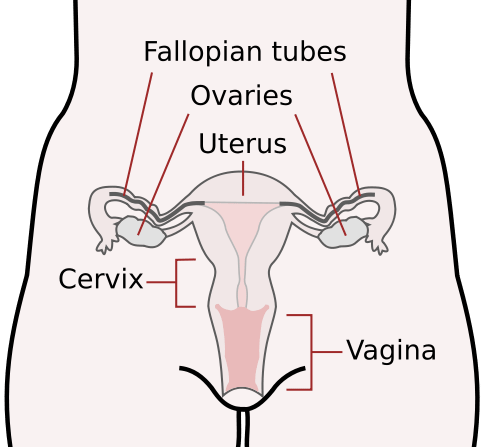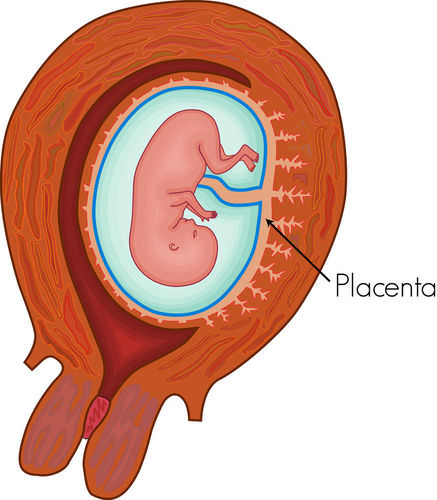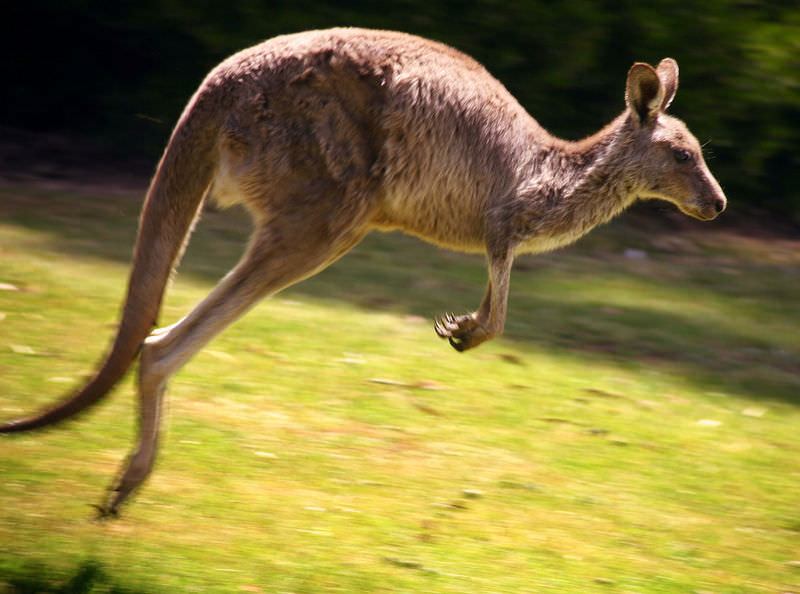12.20: Placental Mammals
- Page ID
- 13256
\( \newcommand{\vecs}[1]{\overset { \scriptstyle \rightharpoonup} {\mathbf{#1}} } \)
\( \newcommand{\vecd}[1]{\overset{-\!-\!\rightharpoonup}{\vphantom{a}\smash {#1}}} \)
\( \newcommand{\dsum}{\displaystyle\sum\limits} \)
\( \newcommand{\dint}{\displaystyle\int\limits} \)
\( \newcommand{\dlim}{\displaystyle\lim\limits} \)
\( \newcommand{\id}{\mathrm{id}}\) \( \newcommand{\Span}{\mathrm{span}}\)
( \newcommand{\kernel}{\mathrm{null}\,}\) \( \newcommand{\range}{\mathrm{range}\,}\)
\( \newcommand{\RealPart}{\mathrm{Re}}\) \( \newcommand{\ImaginaryPart}{\mathrm{Im}}\)
\( \newcommand{\Argument}{\mathrm{Arg}}\) \( \newcommand{\norm}[1]{\| #1 \|}\)
\( \newcommand{\inner}[2]{\langle #1, #2 \rangle}\)
\( \newcommand{\Span}{\mathrm{span}}\)
\( \newcommand{\id}{\mathrm{id}}\)
\( \newcommand{\Span}{\mathrm{span}}\)
\( \newcommand{\kernel}{\mathrm{null}\,}\)
\( \newcommand{\range}{\mathrm{range}\,}\)
\( \newcommand{\RealPart}{\mathrm{Re}}\)
\( \newcommand{\ImaginaryPart}{\mathrm{Im}}\)
\( \newcommand{\Argument}{\mathrm{Arg}}\)
\( \newcommand{\norm}[1]{\| #1 \|}\)
\( \newcommand{\inner}[2]{\langle #1, #2 \rangle}\)
\( \newcommand{\Span}{\mathrm{span}}\) \( \newcommand{\AA}{\unicode[.8,0]{x212B}}\)
\( \newcommand{\vectorA}[1]{\vec{#1}} % arrow\)
\( \newcommand{\vectorAt}[1]{\vec{\text{#1}}} % arrow\)
\( \newcommand{\vectorB}[1]{\overset { \scriptstyle \rightharpoonup} {\mathbf{#1}} } \)
\( \newcommand{\vectorC}[1]{\textbf{#1}} \)
\( \newcommand{\vectorD}[1]{\overrightarrow{#1}} \)
\( \newcommand{\vectorDt}[1]{\overrightarrow{\text{#1}}} \)
\( \newcommand{\vectE}[1]{\overset{-\!-\!\rightharpoonup}{\vphantom{a}\smash{\mathbf {#1}}}} \)
\( \newcommand{\vecs}[1]{\overset { \scriptstyle \rightharpoonup} {\mathbf{#1}} } \)
\( \newcommand{\vecd}[1]{\overset{-\!-\!\rightharpoonup}{\vphantom{a}\smash {#1}}} \)
\(\newcommand{\avec}{\mathbf a}\) \(\newcommand{\bvec}{\mathbf b}\) \(\newcommand{\cvec}{\mathbf c}\) \(\newcommand{\dvec}{\mathbf d}\) \(\newcommand{\dtil}{\widetilde{\mathbf d}}\) \(\newcommand{\evec}{\mathbf e}\) \(\newcommand{\fvec}{\mathbf f}\) \(\newcommand{\nvec}{\mathbf n}\) \(\newcommand{\pvec}{\mathbf p}\) \(\newcommand{\qvec}{\mathbf q}\) \(\newcommand{\svec}{\mathbf s}\) \(\newcommand{\tvec}{\mathbf t}\) \(\newcommand{\uvec}{\mathbf u}\) \(\newcommand{\vvec}{\mathbf v}\) \(\newcommand{\wvec}{\mathbf w}\) \(\newcommand{\xvec}{\mathbf x}\) \(\newcommand{\yvec}{\mathbf y}\) \(\newcommand{\zvec}{\mathbf z}\) \(\newcommand{\rvec}{\mathbf r}\) \(\newcommand{\mvec}{\mathbf m}\) \(\newcommand{\zerovec}{\mathbf 0}\) \(\newcommand{\onevec}{\mathbf 1}\) \(\newcommand{\real}{\mathbb R}\) \(\newcommand{\twovec}[2]{\left[\begin{array}{r}#1 \\ #2 \end{array}\right]}\) \(\newcommand{\ctwovec}[2]{\left[\begin{array}{c}#1 \\ #2 \end{array}\right]}\) \(\newcommand{\threevec}[3]{\left[\begin{array}{r}#1 \\ #2 \\ #3 \end{array}\right]}\) \(\newcommand{\cthreevec}[3]{\left[\begin{array}{c}#1 \\ #2 \\ #3 \end{array}\right]}\) \(\newcommand{\fourvec}[4]{\left[\begin{array}{r}#1 \\ #2 \\ #3 \\ #4 \end{array}\right]}\) \(\newcommand{\cfourvec}[4]{\left[\begin{array}{c}#1 \\ #2 \\ #3 \\ #4 \end{array}\right]}\) \(\newcommand{\fivevec}[5]{\left[\begin{array}{r}#1 \\ #2 \\ #3 \\ #4 \\ #5 \\ \end{array}\right]}\) \(\newcommand{\cfivevec}[5]{\left[\begin{array}{c}#1 \\ #2 \\ #3 \\ #4 \\ #5 \\ \end{array}\right]}\) \(\newcommand{\mattwo}[4]{\left[\begin{array}{rr}#1 \amp #2 \\ #3 \amp #4 \\ \end{array}\right]}\) \(\newcommand{\laspan}[1]{\text{Span}\{#1\}}\) \(\newcommand{\bcal}{\cal B}\) \(\newcommand{\ccal}{\cal C}\) \(\newcommand{\scal}{\cal S}\) \(\newcommand{\wcal}{\cal W}\) \(\newcommand{\ecal}{\cal E}\) \(\newcommand{\coords}[2]{\left\{#1\right\}_{#2}}\) \(\newcommand{\gray}[1]{\color{gray}{#1}}\) \(\newcommand{\lgray}[1]{\color{lightgray}{#1}}\) \(\newcommand{\rank}{\operatorname{rank}}\) \(\newcommand{\row}{\text{Row}}\) \(\newcommand{\col}{\text{Col}}\) \(\renewcommand{\row}{\text{Row}}\) \(\newcommand{\nul}{\text{Nul}}\) \(\newcommand{\var}{\text{Var}}\) \(\newcommand{\corr}{\text{corr}}\) \(\newcommand{\len}[1]{\left|#1\right|}\) \(\newcommand{\bbar}{\overline{\bvec}}\) \(\newcommand{\bhat}{\widehat{\bvec}}\) \(\newcommand{\bperp}{\bvec^\perp}\) \(\newcommand{\xhat}{\widehat{\xvec}}\) \(\newcommand{\vhat}{\widehat{\vvec}}\) \(\newcommand{\uhat}{\widehat{\uvec}}\) \(\newcommand{\what}{\widehat{\wvec}}\) \(\newcommand{\Sighat}{\widehat{\Sigma}}\) \(\newcommand{\lt}{<}\) \(\newcommand{\gt}{>}\) \(\newcommand{\amp}{&}\) \(\definecolor{fillinmathshade}{gray}{0.9}\)
Is this kangaroo a placental mammal?
You know that female kangaroos have a pouch for the final development of their babies. So, no, kangaroos are not placental mammals. What is a placental mammal?
Therian Mammals
Like other female vertebrates, all female mammals have ovaries. These are the organs that produce eggs (see Figure below). Therian mammals also have two additional female reproductive structures that are not found in other vertebrates. They are the uterus and vagina.
- The uterus (plural, uteri) is a pouch-like, muscular organ. The embryo or fetus develops inside the uterus. Muscular contractions of the uterus push the offspring out during birth.
- The vagina is a tubular passageway through which the embryo or fetus leaves the mother’s body during birth. The vagina is also where the male deposits sperm during mating.
 Female Reproductive System of a Therian Mammal (Human). Therian mammals are viviparous, giving birth to an embryo or infant rather than laying eggs. The female reproductive system of all therian mammals is similar to that of humans.
Female Reproductive System of a Therian Mammal (Human). Therian mammals are viviparous, giving birth to an embryo or infant rather than laying eggs. The female reproductive system of all therian mammals is similar to that of humans.Therian mammals are divided into two groups: placental mammals and marsupial mammals. Each group has a somewhat different reproductive strategy.
Placental Mammals
Placental mammals are therian mammals in which a placenta develops during pregnancy. The placenta sustains the fetus while it grows inside the mother’s uterus. Placental mammals give birth to relatively large and mature infants. Most mammals are placental mammals.
The Placenta
The placenta is a spongy structure. It consists of membranes and blood vessels from both mother and embryo (see Figure below). The placenta passes oxygen, nutrients, and other useful substances from the mother to the fetus. It also passes carbon dioxide and other wastes from the fetus to the mother. The placenta lets blood from the fetus and mother exchange substances without actually mixing. Thus, it protects the fetus from being attacked by the mother’s immune system as a “foreign parasite.”
 Placenta of a Placental Mammal (Human). The placenta allows the exchange of gases, nutrients, and other substances between the fetus and mother.
Placenta of a Placental Mammal (Human). The placenta allows the exchange of gases, nutrients, and other substances between the fetus and mother.Pros and Cons of Placental Reproduction
The placenta permits a long period of fetal growth in the uterus. As a result, the fetus can become large and mature before birth. This increases its chances of surviving.
On the other hand, supporting a growing fetus is very draining and risky for the mother. The mother has to eat more food to nourish the fetus. She also becomes heavier and less mobile as the fetus gets larger. As a result, she may be less able to escape from predators. Because the fetus is inside her, she can’t abandon it to save her own life if she is pursued or if food is scarce. Giving birth to a large infant is also risky. It may even result in the mother’s death.
Summary
- Therian mammals are viviparous. They give birth to an embryo or infant rather than laying eggs.
- The female reproductive system of a therian mammal includes a uterus and a vagina.
- There are two groups of therian mammals: placental mammals and marsupials.
- Placental mammals give birth to a relatively large and mature fetus. This is possible because they have a placenta to nourish the fetus and protect it from the mother’s immune system. This allows for a long period of growth and development before birth.
- Because the offspring of placental mammals is relatively large and mature at birth, it has a good chance of surviving. However, carrying and giving birth to a large fetus is risky for the mother. It also requires her to eat more food.
Review
- What are therian mammals? What structures are found in these mammals that are absent in other vertebrates?
- What are the functions of the uterus and vagina in therian mammals?
- What is the placenta?
- Describe how the placenta functions?
- Placental mammals greatly outnumber the other two groups of mammals. Infer why placental mammals have been so successful.
| Image | Reference | Attributions |
 |
[Figure 1] | Credit: Charlie Marshall Source: www.flickr.com/photos/100915417@N07/9667430048/ License: CC BY 4.0 |
 |
[Figure 2] | Credit: Centers for Disease Control and Prevention, User:Mysid/Wikimedia Commons, modified by Raymond Chou/CK-12 Foundation Source: commons.wikimedia.org/wiki/File:Scheme_female_reproductive_system-en.svg License: Public Domain |
 |
[Figure 3] | Credit: Image copyright Convit, 2014;By Nobu Tamura http://paleoexhibit.blogspot.com/ http://spinops.blogspot.com/ http://www.palaeocritti.com - Own work, CC BY-SA 3.0, commons.wikimedia.org/w/inde...curid=19459893 Source: http://www.shutterstock.com ; By Nobu Tamura http://spinops.blogspot.com/ http://www.palaeocritti.com - Own workhttp://paleoexhibit.blogspot.com/ ; CC BY-SA 3.0 ; commons.wikimedia.org/w/index.php?curid=19459893 License: Used under license from Shutterstock.com |

